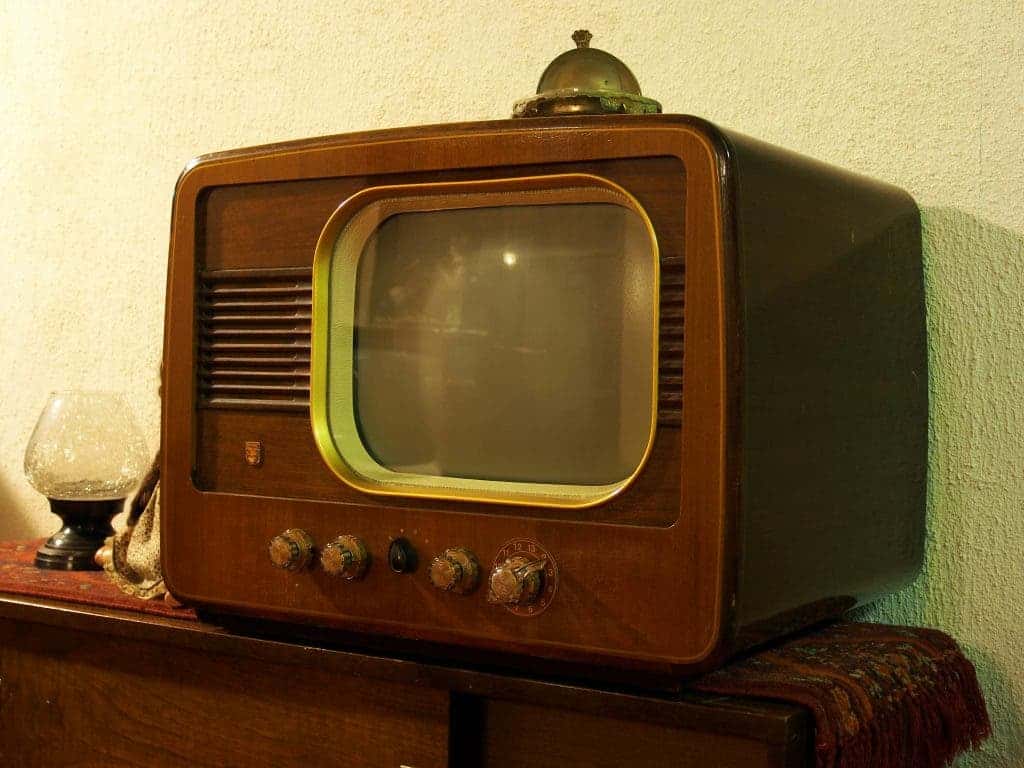Imagine life without television — can you even do that? Imagine life without visual social media content – no Facebook videos, no Instagram snippets, no six-second Vines and no 10-second Snapchats. Could we function in a world void of visual content? How did we get to this point, anyway?

When television technology was developed, it was developed for a reason. But was that reason for the sake of technology, broadcasters, potential investors or the viewers?
To Understand Television’s Future, We Must Examine Its Past
To appreciate the evolution of the visual broadcasting technology that we see today, we have to acknowledge the motivation behind why television’s developers explored this form of visual media. From early fax machines to projectors, from the mechanical scan television to the electronic television to the OLED TVs we are seeing today – the visual content we now depend on went through many iterations.
The motivation for the development of television was mixed. It was about the advancement of technology and also the ability to capitalize on giving an audience a clearer picture of what was being communicated. By clearer, I mean a more prescribed visual that is not simply left up to each audience member to interpret what they imagine and understand from written or spoken words.
We do not know exactly what motivated investors to fund 21-year-old Philo Taylor Farnsworth’s design of an electronic television. Farnsworth’s imagination may have also been spurred as a reflection of what was happening around him during the U.S.’s Great Depression and World War II. With U.S. employment at more than 20% and the military innovations developed to respond to the threat of war, the idea of innovation was in the air. Considering that very few people had electricity at the time, including Farnsworth, it may be this absence of technology that led to his concept of an electronic television design.
Potential Profits from Television Also Encouraged Its Development
Farnsworth’s idea started as an exploration of how images could be scanned to radio waves and then back to images through a beam of electrons. Farnsworth needed the resources to continue the development of his design, which is considered the direct ancestor of television.
His investors asked for a return on investment almost immediately. This led to an investment in electronic television by one of the biggest players in the radio and communication game – the Radio Corporation of America (RCA).

It was the exploration of how television could reap a return on investment that further developed broadcasting technology. The transmission of images through television was a step towards defining the cause-and-effect relationship between the transmitter and the audience.
Television programming occurred for the first time at NBC on July 7, 1936, with a 30-minute program by RCA. The British Broadcasting Company (BBC) aired the world’s first regular television service on November 2, 1936.
The first paid advertisement aired in the U.S. on WNBC in 1941 before a Dodgers’ baseball game. With the use of paid ads, investors in broadcasting technology began to reap a return on their investment.
Ad-Heavy Programming Discouraging Viewers, Causing Modern Shift to Viewer-Controlled Television
Now 80 years later, the length of programming includes at least 25% advertising to create that return on investment for television stations. Is this a sign that advertisers are obscuring the original intent of TV – programs with user-validated content?
Perhaps, but that trend won’t last long. Another shift is taking place where audiences are now influencing and interacting what they view on television (through social media) or television-streaming applications such as Periscope.
Could social media lead to a shift away from advertiser-influenced to viewer-validated television? Could Periscope completely replace TV because of its direct interaction options (hearts/comments)? Could Periscope simply represent another iteration in the evolution of broadcasting by which the inclusion of new technology advances rather than obliterates an old technology?
About the Author
This is an article from Ariana Marshall, Faculty Member, School of STEM at American Public University. Dr. Ariana Marshall teaches environmental science, sustainability and oceanography courses with APU. In 2014, she founded the Caribbean Sustainability Collective, which facilitates cooperative demonstration projects through the Better Caribbean Program and Platform. She completed her doctoral degree in environmental science, policy and risk management from the FAMU National Oceanic and Atmospheric Administration (NOAA) Environmental Cooperative Science Center (ECSC).



